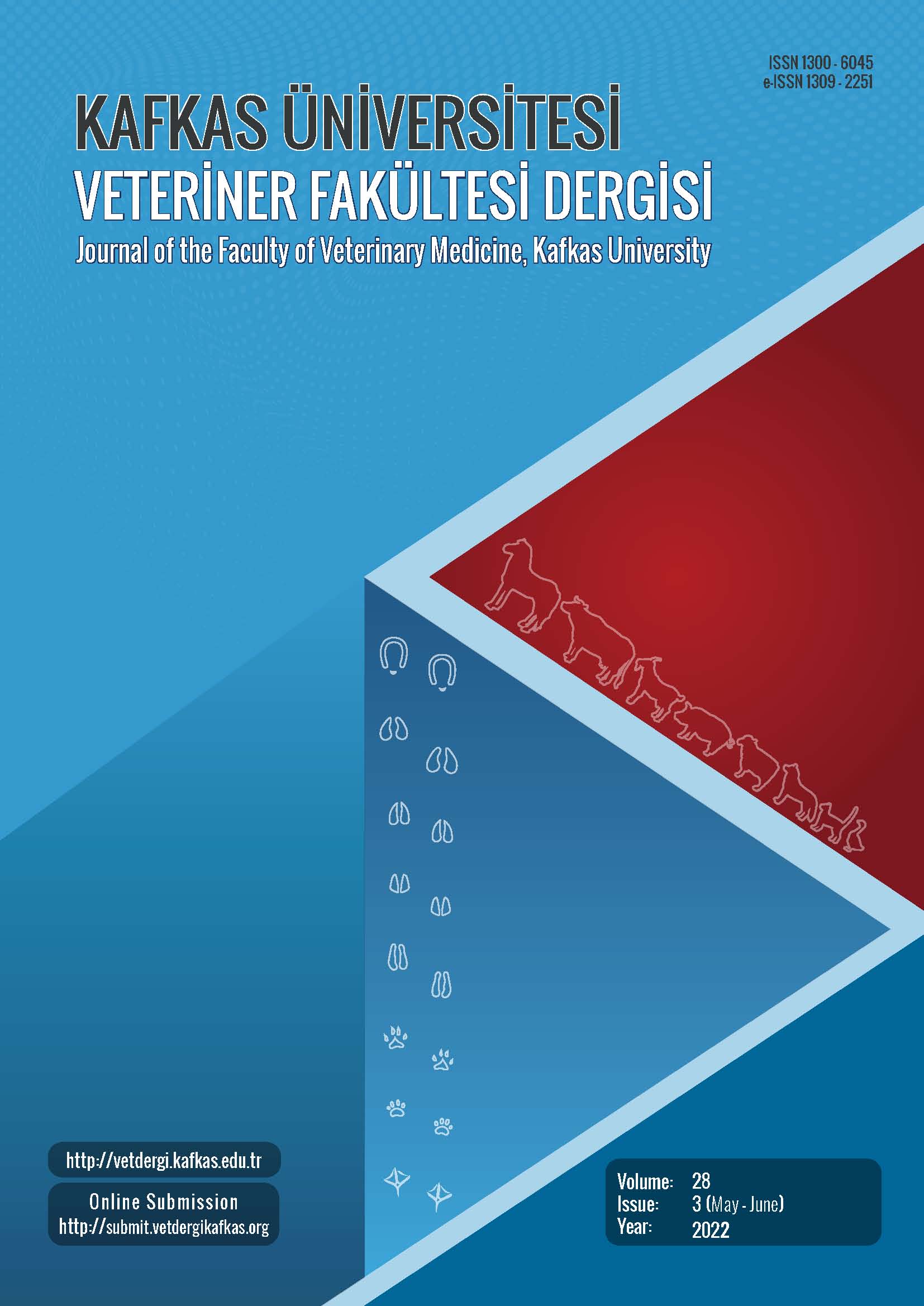
This journal is licensed under a Creative Commons Attribution-NonCommercial 4.0 International License
Kafkas Üniversitesi Veteriner Fakültesi Dergisi
2022 , Vol 28 , Issue 3
Growth Performance, Ruminal Volatile Fatty Acids, Health Status and Profitability in Calves Fed with Milk Supplemented with Probiotics
1Erciyes University, Faculty of Veterinary Medicine, Department of Animal Health Economics and Management, TR-38000 Kayseri - TÜRKİYE2Erciyes University, Graduate School of Health Sciences, Department of Animal Nutrition and Nutritional Diseases, TR-38000 Kayseri - TÜRKİYE
3Erciyes University, Faculty of Veterinary Medicine, Department of Animal Nutrition and Nutritional Diseases, TR-38000 Kayseri - TÜRKİYE DOI : 10.9775/kvfd.2022.27203 Th is study aimed to determine the eff ects of milk supplemented with diff erent amounts (10-15 mL/day) of probiotics (eff ective microorganism-EM) during the period until weaning (70 days) of the calves on the growth performance [live weight (LW), live weight gain (LWG), the feed conversion ratio (FCR), body measurements], rumen volatile fatty acids (VFA), health status and profitability. A total of 42 calves were divided into three groups as control and two treatment groups (EM10 and EM15) containing 14 calves in each with similar live weights (42±5 kg), ages (7±3 days), breeds (7 Holstein and 7 Simmental), and sex (7 female and 7 male). Th e control group had no supplement in the milk, whereas the calves in the treatment groups received 10 mL of EM per calf per day orally or 15 mL of EM with milk. According to the study results, using the 10 and 15 mL/day of EM in calves had no significant eff ect on the performance (LW, LWG, FC, body measurements), VFA, disease rates, and profitability (P>0.05). However, in the first 30 days of the study, the FCR of the EM10 group was positively aff ected compared to the control group (P<0.05). In conclusion, slightly better results were obtained in both treatment groups regarding body measurements, VFA, disease rates, treatment costs and profitability than the control group. Keywords : Calf feeding, Eff ective microorganism, Performance, Probiotic, Profitability










